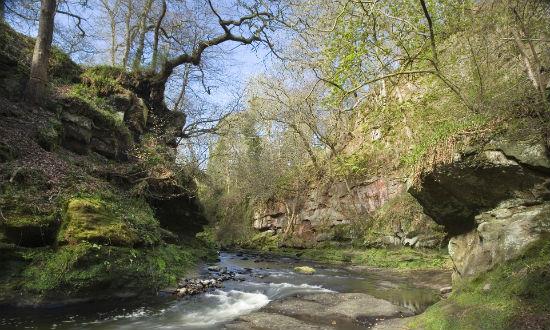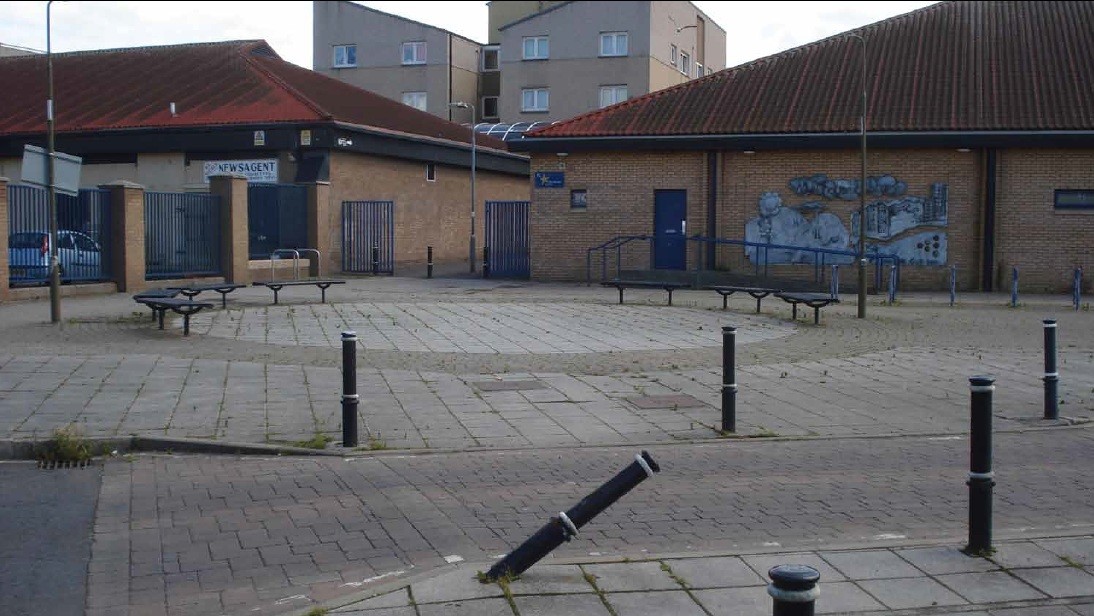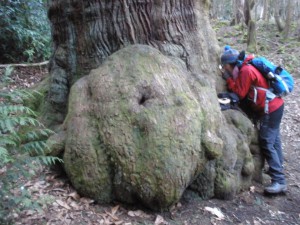

Image@www.rbge.org.uk
When your office is situated in a glorious setting – such as the Royal Botanic Garden Edinburgh (RBGE) – it is understandable that you may not feel the need to venture further afield… However in order to really begin to get to grips with epiphytic lichens – that’s those that grow on trees (and one really should do this as a Natural Talent trainee working on lichens as air quality indicators) – it’s a good idea to head out into a really wooded area. Such as Roslin Glen for instance.

(Image@www.visitscotland.com)

(Image by David Clarke @www.britishlichens.co.uk)
Lichens here in the valley are almost literally dripping from the trees. In this leaf-less winter-woodlandscape the delicate shades of green and gold, yellow and grey and brown of the lichens are the rich winter foliage, covering branches, twigs and trunks.
These amazing organisms – which actually consist of two completely different organisms (a fungi and an algae or cyanobacteria) working together in symbiosis, enabling each other to survive and thrive – play an essential role in this and many more, if not all ecosystems. Often overlooked and undervalued these humble yet extraordinarily complex organisms are an essential component in providing healthy ecosystems.
Lichens can not only fix nitrogen, store carbon, provide food and shelter for a number of other species and play a role in the formation of soil and succession of plant growth, but they can also be used to indicate ecosystem health by being indicators of air quality. This is because lichens are highly sensitive to pollution and the absence or presence of certain lichen species can tell us a lot bout the health of our local environments.
Now stood here in Roslin Glen surrounded by the beauty of nature – albeit with my eye to a tree branch, but with my mind on the wonder of the biodiversity of the planet and it’s abililty to provide us with clean air, as well as of course clean water and food – it is easier to connect all these things up.
BUT, what about connecting with this bigger picture if I’m stood in the middle of the city, surrounded by the urban jungle?? And how can lichens as indicators of pollution play a role in helping me reconnect with the planet and the benefits and services it provides??

(Image@www.urbanrealm.com)
These are big questions for me to ponder as I make my way back to the centre of Edinburgh and the RBGE Cryptogam department, pockets stuffed with lichens to study under the powerful eye of a microscope….

